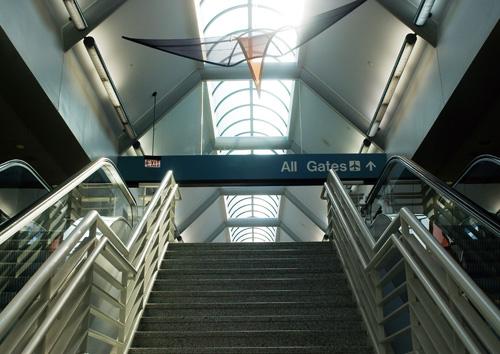Communication in process regarding Willard

Erica Magda
September 18, 2008
Potential enhancements in Willard Airport infrastructure are prompting community and administrative discussions.
Willard Airport is unusual because it is one of three commercial airports in the country owned by a university, said Bruce Walden, director of real estate planning and services at the University. It is one of 10 commercial airports in Illinois and offers flights to Chicago, Dallas/Fort Worth and Detroit.
“There is a lot of interest and a lot of trustees involved in Willard, given the fact that we’ve had recent reductions due to the economy,” said Mike Bass, associate vice president for capital programs and real estate services at the University. Bass was referring to recent increases in fuel prices, which have negatively affected airports.
Bass said officials want to make better use of the airport, but there are not any concrete plans yet.
At the Sept. 11 Board of Trustees meeting, Bass said that the airport wants to remain competitive with other airports in Bloomington, Decatur, and Peoria, Ill., but it is finding that hard to do so because of its increasing expenses.
Get The Daily Illini in your inbox!
The airport is facing declining profitability because of fewer flights and its broken partnership with Delta Airlines, Bass said at the meeting.
“The trustees want (Willard) to succeed, but at the same time, they don’t want it to be an economic drain on the University,” Bass said.
He estimates the total budget for the fiscal year 2009 to be $4.3 million. The state gives the Board of Trustees $440,000 annually for the board to give to Willard.
The airport receives $1.4 million from the Airport Improvement Program federal grant, $100,000 of which is given automatically to any airport with more than 10,000 passengers boarding planes annually. Additional revenue is generated by parking fees, airline landing fees and leases, Bass said.
The University has owned and operated the airport since 1945. The existing terminal was built 20 years ago and Champaign County paid for one-third of the project’s $13.7 million budget.
“Our interest in it is to have a viable commercial airport for business and the people who live here,” said Craig Rost, deputy manager for development in the city of Champaign. Rost said Champaign may be involved in future discussions regarding the airport, but nothing is currently underway.
Students at the University’s Institute of Aviation use the airport as they train for Federal Aviation Administration certification and hone their skills.
“It’s really, really helpful,” said Erin Galis, sophomore in Aviation about Willard’s benefits to flight students. “You need to know how to deal with (airplane) traffic like that in a larger airport situation.”
Galis said that she flies six hours per week for class, in addition to extra time she spends flying for extracurricular aviation activities.
University faculty and students are the airport’s primary commercial users, Bass said in his presentation on Sept. 11. The two commercial airlines that fly into Willard are American Eagle Airlines and Mesaba Airlines, which is a regional subsidiary of Northwest Airlines. The airport has 11 flights daily.
“Fundamentally, there is an agreement that Willard is an important asset to the University and campus as a whole,” Bass said.
There are plans for future discussion between the University and the community, Rost said. In upcoming months, Bass said he plans to meet with community members and gather more substantial data on how Willard can best serve citizens.
“Fundamentally, you’ve got to question the long-term goals of Willard and of the community,” Bass said.
He plans to give the trustees an update on Willard at the November meeting in Springfield.
While a university-owned airport may be a rare commodity, aviation students will continue to take advantage of the opportunities of flying with both student and commercial pilots.
“The mixture of both is something that we’re really lucky to have,” Galis said.
Mike Logli contributed to this report






